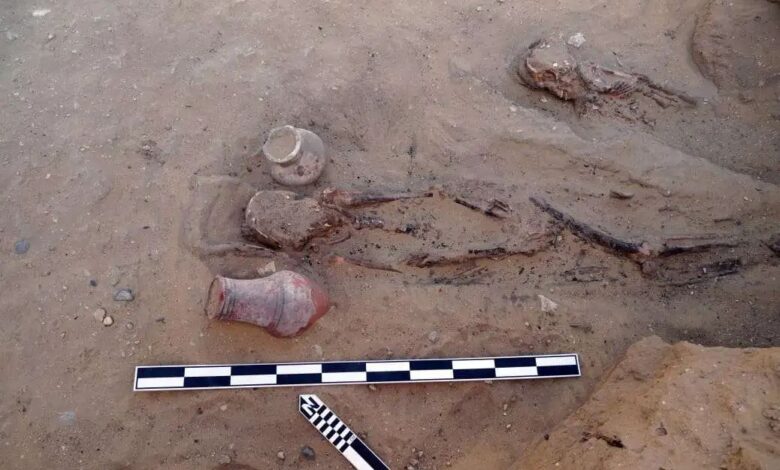
An Egyptian-Japanese archaeological mission working at the Saqqara archaeological area has uncovered several new discoveries, including tombs, graves and assorted Mastaba.
The announcement came following archaeological excavations on the eastern slope of Saqqara area, which are being conducted by the joint mission between the Supreme Council of Antiquities in Egypt and Kanazawa University in Japan.
The mission discovered four tombs dating back to the late Second Dynasty and early Third Dynasty, and more than ten burials from the Eighteenth Dynasty of the New Kingdom.
The Minister of Tourism and Antiquities Sherif Fathy, in a statement on Saturday, praised the efforts made by Egyptian and foreign archaeological missions towards unveiling the secrets of ancient Egyptian civilization.
The Secretary General of the Supreme Council of Antiquities, Mohamed Ismail Khaled, stressed the importance of this discovery, as it indicates that the Saqqara archaeological area holds many secrets waiting to be revealed.
He noted that this new discovery indicates that the current Saqqara necropolis extends northward to a larger area than what is currently known.
Khaled added that the discovery of burials dating back to the early Eighteenth Dynasty proves that the use of Saqqara as a cemetery for the modern state began when the city of Memphis was restored as the capital of the Egyptian state after the expulsion of the Hyksos.
The head of the Egyptian Antiquities Sector at the Supreme Council of Antiquities, Mohamed Abdel-Badie said that these tombs date back to the Second and Third Dynasties.
He explained that they consist of two mud-brick Mastabas and two tombs carved into rocks, one of which is located near the northern edge of Saqqara Plateau and has an upper building and a shaft fortified by a limestone door at the entrance to the passage leading to the burial chamber.
The other Mastaba is adjacent to the rocky slope and consists of an upper part of mud brick and a rectangular shaft in the middle.
He pointed out that several vessels were discovered in the surrounding area, including an Egyptian alabaster plate and a solid cylindrical vessel that may date back to the late Second Dynasty and early Third Dynasty.
A limestone door was also discovered, and the mission will carry out more excavation work during the coming seasons to reveal what lies within.




